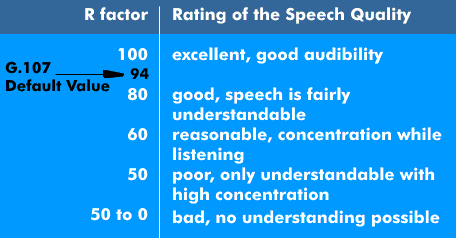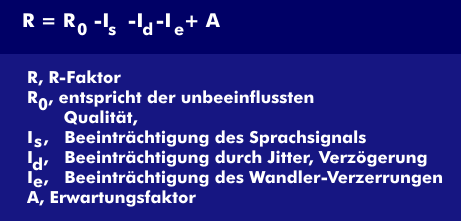transmission quality rating (R)
The R-factor is an objectively determined value for the transmitted voice quality in telephone networks. It is used to quantify voice quality and determines the quality of voice transmission. This standard method is described in the E model of the ITU-T, which is specified in G.107.
In addition to the objective R-value, there is also the subjectively determined MOS value, the Mean Opinion Score (MOS), both of which have a certain correlation to each other.
The R-factor can assume values between 0 and 120, with an R-value of 100 and above corresponding to an MOS value of 5. Due to the speech conversion into a digital signal and its reconversion, the theoretical maximum of the R-factor is limited to 93.2. This corresponds to an MOS value of 4.41. The default value for the R-factor defined in G.107 is 94. In practice, however, maximum R-values of somewhat over 80 are achieved due to the codecs.
In addition to the codec used, various transmission parameters influence the R-factor. These include delay times, the signal-to- noise ratio, jitter, echoes and packet losses.


